5 Aug 2024
Updated on January 30th, 2025
How to Develop Apps Like PayPal: Essential Features and Steps
Matthew Connor
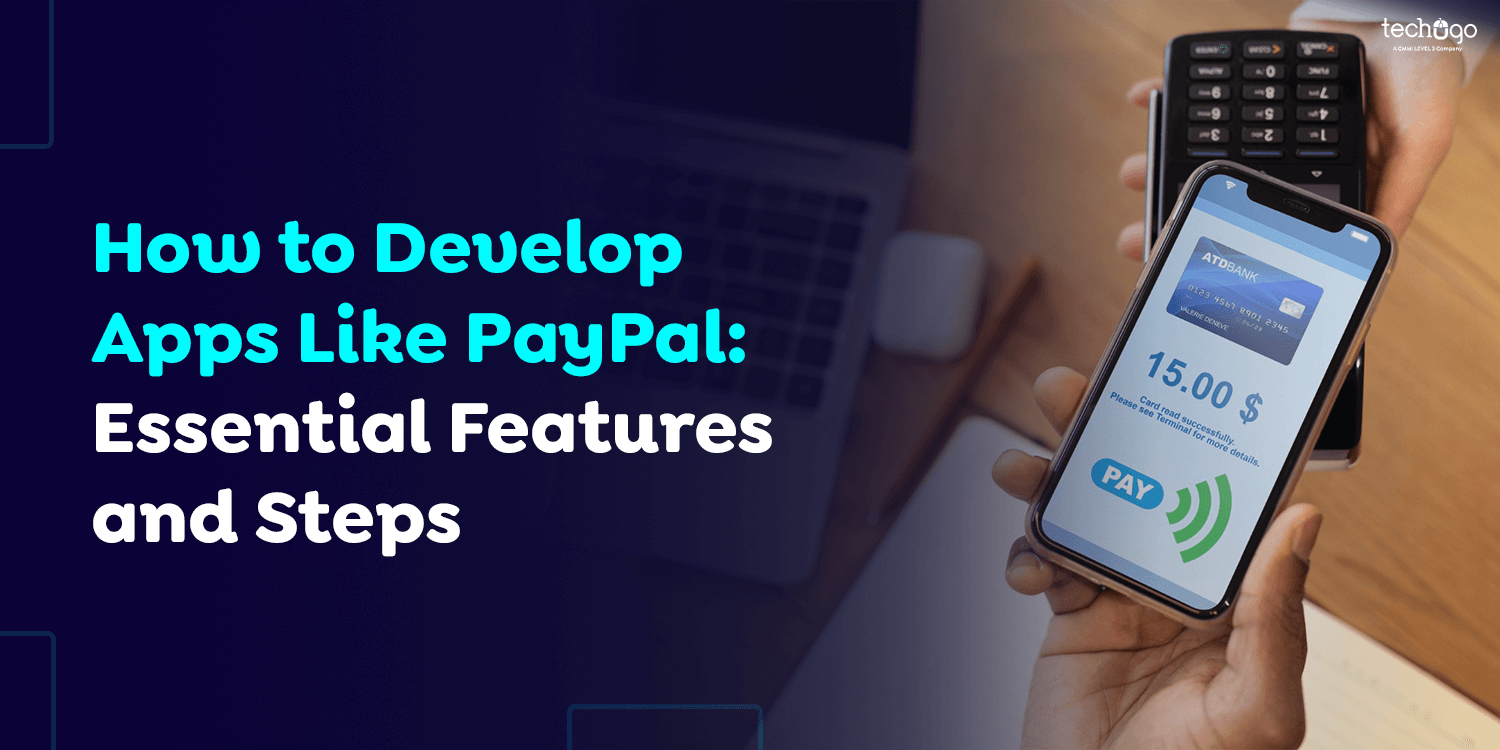
Do you want to develop an app like PayPal? This guide helps you understand the essential features of developing payment apps like PayPal.
PayPal and its rivals have long been at the heart of online transactions and, with rapid technological advancements, have seen exponential expansion.
This guide offers all the information and advice required for entering the digital payments market or incorporating digital payments into business operations.
Understanding payment processing basics and providing user-friendly experiences are just the start – don’t start creating your personalized PayPal-like app today – we are here to assist! So don’t put off getting started now with creating one!
What are Payment Apps Like PayPal?
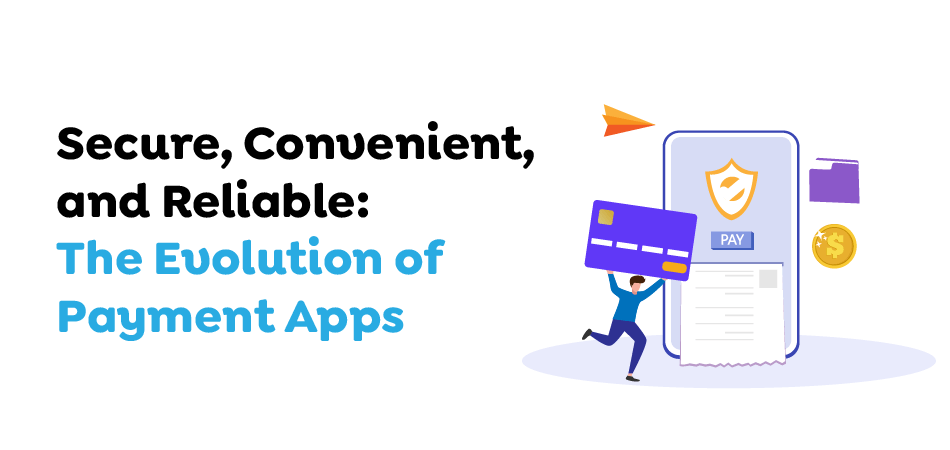
The demand for payment software such as PayPal is vast, and it is an innovation that completely alters the method of transferring money. The entire world is shifting to a cash-free future. Enjoy sending and receiving cash in real time using payment methods such as PayPal. This is why many companies are requesting to create apps similar to PayPal for easy online transactions.
PayPal is the first company to enter the peer-to-peer market and has achieved an impressive position in it. According to Statista, in the quarter that began in 2021, PayPal had nearly 392 million accounts active, which will reach 426 million by the fourth quarter of 2021 worldwide.
However, it serves over 28 million companies. In fact, estimates suggest that PayPal was able to generate annual revenues of $25.3 billion in 2021. That’s why companies would prefer to create something similar to PayPal, the payment provider. The research shows that over 75% of Millennials utilize the mobile P2P payment method. It’s not a surprise that consumers prefer sending money online. Unsurprisingly, people like to transfer and receive money in a few clicks.
Because of these reasons, the demand is high to develop a payment gateway similar to the PayPal app or another similar app. Additionally, PayPal is among the most popular P2P applications in the US.
However, the demand for PayPal types of apps is growing, and they are incorporating new technologies such as biometrics and NFC. These technologies for payment mobile app development fuel these apps, making them more self-sufficient.
Reasons to Develop a P2P Application in 2024
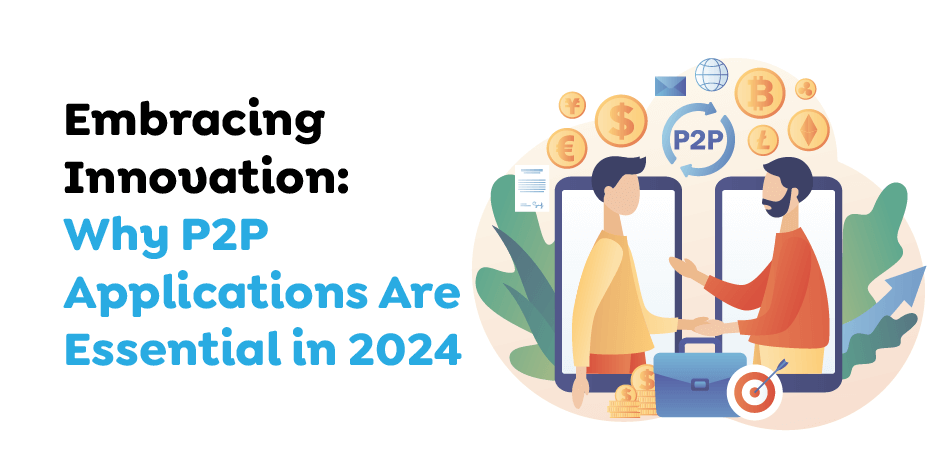
Four factors will assist you in making sure that a P2P-based payment app is worth it for you to put your money into. Let’s look at each one of them:
- Demand is rising. Users of all age groups now demand more cashless, one-click ordering, pay-contactless, and card-free fintech solutions. This has led to the growth of P2P online services.
- It is growing quicker than the other FinTech. The P2P mobile payment volume is expected to reach $785.19 billion by 2021. A case in point: Revolut started in 2015 as a purely P2P platform with over 1 million active users. It is available in more than fifteen EU countries.
- There are untapped niches. The financial participation rate is only 69%. That’s 31% of the population that does not use payment solutions. If you can create a successful marketing plan for this segment of people who aren’t banked, you will undoubtedly create the next great product for your business.
- It is possible to copy an idea to create an entirely new market. Models for monetization and business, such as PayPal or Stripe, could be replicated to create an opportunity for your P2P wallet application in a booming market.
Components of a Payment Platform Like PayPal
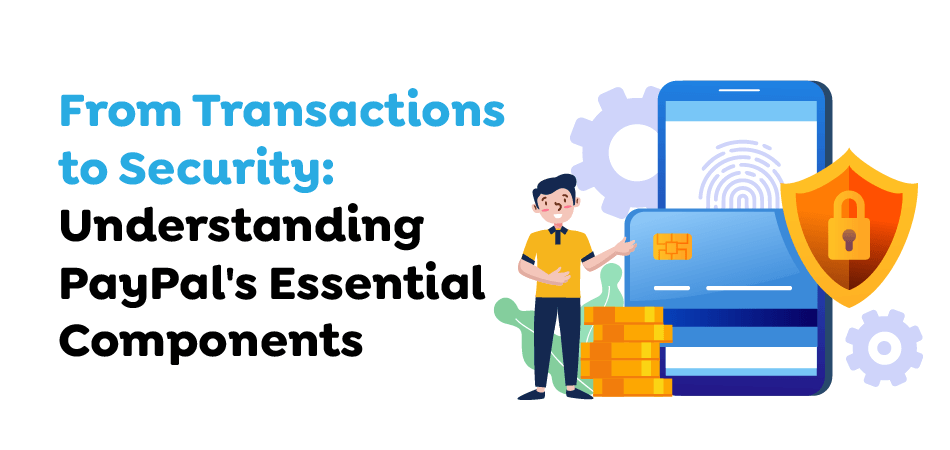
When building your own payment apps, many technical elements must be considered to ensure the best performance.
API/SDK
Well-designed APIs and SDKs are necessary for outside partners to connect to your payments platform. Documenting and exposing wallet, payment, and other features via APIs enables connected applications, websites, and other services to be built upon your existing infrastructure, creating new applications and channels for adoption.
Cloud Infrastructure
A cloud-based platform like AWS, Google Cloud, or Microsoft Azure provides the always-on capacity of servers and the resilience needed to support financial transactions. These platforms offer features like auto-scaling, which allows the resources to expand or contract according to the demand for volume in real time.
Digital Wallet
Digital wallets allow users to secure and save payment credentials like bank accounts or credit cards on your online platform. This eliminates the need to enter information for every transaction and lets customers quickly switch between different payment options when they are ready to make a payment.
ID Verification
ID verification software allows for the automation of screening for government-issued IDs during onboarding. By comparing customer IDs with databases for verification, you can verify users’ identities in real-time and reduce fraud while still ensuring KYC/AML requirements tied to financial services.
CRM System
An effective customer relation management (CRM) system is essential for payment systems that keep track of transactions, profiles, communications, and other customer data. This is because the manual workflows become less effective as your user base grows. CRMs such as Salesforce, Zendesk, and HubSpot are integrated with the platform to provide complete transparency into the entire customer interaction.
Financial Regulations
Expert compliance experts advise you on how to structure your platform to comply with compliance requirements. This includes monitoring endpoints and transaction filtering, reporting suspicious activity, and preparing for audits and documentation. Staying current with the changing regulations requires constant monitoring and expertise. While the cost is significant, the risk of not complying is far greater than the cost.
Must-Have Features to be Included in Payment Apps like PayPal
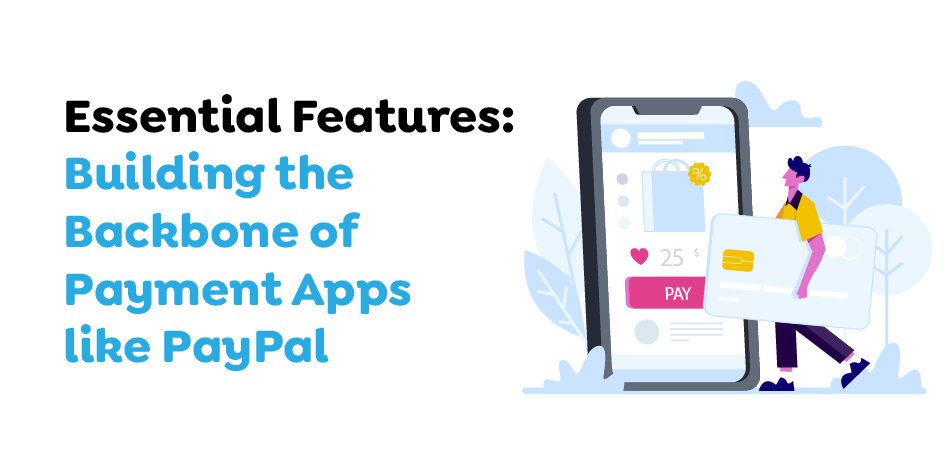
A few of the most popular P2P pay-per-click platforms, like PayPal, provide additional features beyond the ability to transfer and receive money. The features vary between platforms, however, some commonly used ones include:
Link Bank Accounts
The majority of P2P payment platforms permit users to connect multiple accounts with banks, allowing them to select the account they want to use for every transaction. This feature is particularly beneficial for people with multiple bank accounts for business and personal use or who frequently conduct international transactions.
Purchase
Alongside P2P transactions, certain payment apps let users purchase purchases directly through the application. This feature particularly benefits people who shop online or do not want to divulge their credit card numbers with many merchants.
Multi-Factor Authentication
P2P payment applications typically require users to prove their identity using multi-factor authentication before completing the transaction. This extra security layer helps prevent unauthorized access to the user’s account and guards against fraud.
Foreign Exchange
Some digital payment apps can convert currencies for international transactions, allowing customers to purchase items or transfer money in various currencies. This feature is useful for those who often travel or have family and friends who live abroad.
Cross-Border Transfer
As globalization expands, many people have family and friends in different countries. Payment apps through P2P allow for easy money transfers across borders and eliminate the need for costly charges for international transactions and long waiting times for traditional funds transfers through banks.
Make The Payment
With PayPal, users can make payments using their bank accounts linked to them as well as credit cards, which ensures security and convenience. In addition, customers can keep the balance of their PayPal account, which can be used to pay for future transactions without having to input bank information every time. This makes it simpler to manage your finances and make purchases across multiple platforms and retailers.
Money Transfers
Many P2P payment platforms also allow users to transfer funds among themselves. This makes it easier to split bills or send money to relatives and friends. Some platforms also allow international transfers, eliminating the need for costly wire transfer services.
Data Security
One of the most important problems with any financial online purchase is the safety of banking and personal information. P2P payment platforms typically come with advanced security measures to secure user information, such as encryption and two-factor verification. This offers users confidence when they are making transactions and also reduces the chance of being a victim of fraud.
Bills Sharing
Most P2P payment platforms can split charges among several customers, making it easier for friends or roommates to split costs. This particularly benefits those who often share utilities, rent, or other expenses.
P2P Lending Apps
In addition to payment transactions, there are P2P lending applications that allow users to borrow money directly from individuals. This is a great alternative for those who are having problems obtaining traditional loans or who require fast access to money.
11 Steps to Build an App Like PayPal
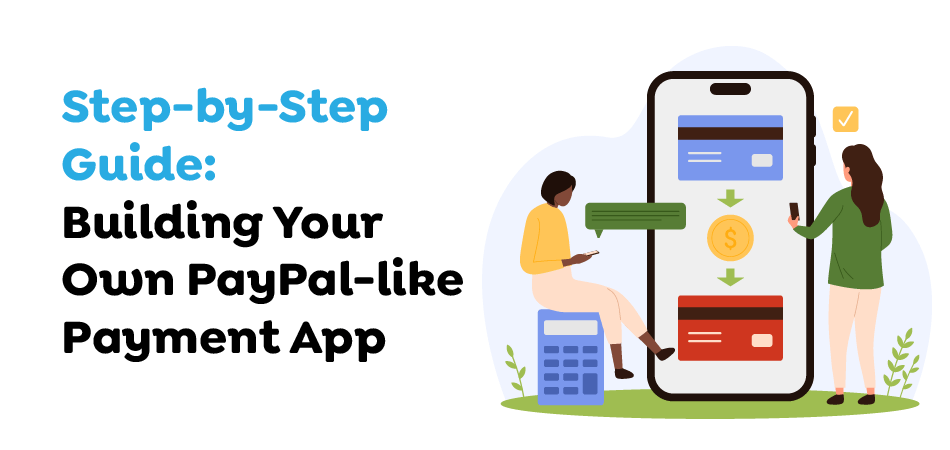
What is the best way to develop apps like PayPal? Making an app, regardless of its subject, is difficult. There are a lot of important details to be aware of when creating an app.
We’ve broken this process down into smaller steps to make it easier to comprehend. Each step will enable you to learn more about different aspects of payment app development.
So, let’s begin by figuring out how to make an app that is similar to PayPal!
Defining the Scope of the Project
When creating an app, it is essential to establish how the app will be developed. Project scoping includes various crucial factors, including-
The company is working on an online app, an Android application, and an iOS application to satisfy the needs of all clients.
You must have basic online payment capabilities like opening business and user accounts, executing online payments, and balance reporting for transactions and reporting. ;
A robust identification verification and KYC procedure for users and merchants to guard against fraud and scams.
The Customer Resource Management features to track the relationships with vendors and sellers.
Deciding the Correct Development Model
Like project scopes, deciding on the appropriate SDLC model is vital for your app’s development. Developing a Minimum Viable Product (MVP) with all the characteristics will also be useful for your application.
Because you focus on a single location, you will get the most accurate customer feedback about your app. This feedback can help you further improve your app in many ways.
Development Platform Selection
The right platform for launching your payment app is vital because it has a direct impact on the cost of acquiring users, development costs, acceptance, and rate of use.
PayPal is accessible on the website, iOS, and Android platforms, allowing it to reach out to various customers. Developing several platforms simultaneously will require more time and resources, resulting in higher prices. At the same time, targeting different platforms is vital for payment apps to increase the number of users and volume of transactions.
It is also possible to choose the hybrid development process that uses a single codebase, which can be utilized simultaneously for iOS and Android platforms.
Choose the Right Technology Stack
Choosing the appropriate technology stack is crucial to the performance and capacity your payments gateway can provide. You should consider using Ruby on Rails for backend development due to its security and robust framework features.
Engaging professional Ruby on Rails developers can dramatically speed up your development. For the front end, contemporary JavaScript frameworks such as React or Angular offer users a seamless experience.
Designing a User-Friendly Interface
The design of a user-friendly interface is vital to creating an improved payment system that people will enjoy. Your app’s interface should be user-friendly, visually appealing, and simple to use.
Here are some of the best techniques for designing an easy-to-use interface:
-
Keep It Simple
Beware of unnecessary features and clutter, which can be overwhelming for users. Instead, concentrate on the essential functions users require to make transactions.
-
Provide Clear Feedback
Give users prompt and clear feedback whenever they finish a transaction or perform an action in the application.
-
Use Visual Cues
Visual cues, such as images, icons, and colors, guide users through the app and highlight key aspects or actions.
When you design your app’s interface using custom fintech app development, you need to consider accessibility. Make sure that your app can be used by disabled users, such as those with visual impairments or limited mobility.
Integrating Security Features
Security is a top priority when it comes to payment applications. Including secure features is vital to protect your customer’s personal information and prevent fraud, a situation found in apps such as PayPal.
Here are some important security aspects to take into account when creating the electronic payments system you want to use:
-
Encryption
Use strong encryption to safeguard sensitive data, such as stealing credit card information.
-
Two-Factor Authentication
Users should provide another authentication method, like the code they receive on their mobile phones, to block unauthorized access to their accounts.
-
Fraud Detection
Make use of machine learning algorithms to track transactions and identify suspicious activity.
-
Compliance
Make sure that your application is compliant with industry standards and regulations, such as the Payment Card Industry Data Security Standard (PCI DSS).
When integrating security features in your application, it’s essential to partner with a reliable security service provider who can assist you in identifying and minimizing security threats.
Building a Backend System
The backend system is the foundation of your payment application. It’s crucial to design an effective and reliable system to manage large numbers of transactions.
-
Scalability
Check that your backend software can handle the high volume of transactions and traffic without crashing or slowing down.
-
Reliability
Develop a robust and reliable system with built-in redundancy and failover mechanisms. This will guarantee that transactions are processed regardless of whether the system fails.
-
Performance
Optimize your backend system with quick responses and low latency to ensure speed.
-
Flexibility
Develop a flexible and modular system using APIs that can easily be connected with other services and systems. When you build your backend application, consider the costs and time needed to maintain and upgrade it as the application grows and changes.
Obtain an ID Verification Solution
A solid ID verification tool is crucial for any payment app to protect it from fraud or scams. Additionally, the ID verification software must comply with the strict regulations and rules laid by financial services institutions.
In the same way, the ID verification tool must also be able to manage the Know Your Customer (KYC) process. Additionally, it must be able to handle the government ID the client will present when completing the verification process.
Build Your Team
Now you’ll have to establish the development staff. If you already have an internal development team, it’s time to choose the best employees to do the task.
When selecting a Fintech app development company, there are many aspects to consider. Consider, for instance, whether their portfolio includes projects like the ones you’re searching for. If not, is it of an excellent standard? Also, you should confirm that they’ve got an established development process posted on their website and also provide robust post-release assistance options.
Development and Testing Phase
After the design is complete, what’s next?
This is when the design is transformed into a working P2P application. Before starting the process, the design phase must include a wireframe of your application’s screen and connection.
You can ask for an interactive model to see how it feels to navigate the application. The more clear the product’s design phase is, the more effective the test and development phase.
The product created at this point will appear to be an MVP or a fully-fledged product. The MVP application refers to a minimum viable product that introduces new features.
The fully-scaled application includes all the features necessary to provide your business with the most enjoyable user experience.
Test the Application
After your app’s development is complete, it’s crucial to test it before launch. Testing the app rigorously assures that it is completely free of bugs or other issues.
Regular and rigid testing can help improve your app over the competition. It can enhance the performance of applications in a variety of ways. This will help you boost its ROI and gain more money from it.
Monetization Models for PayPal Payment Application
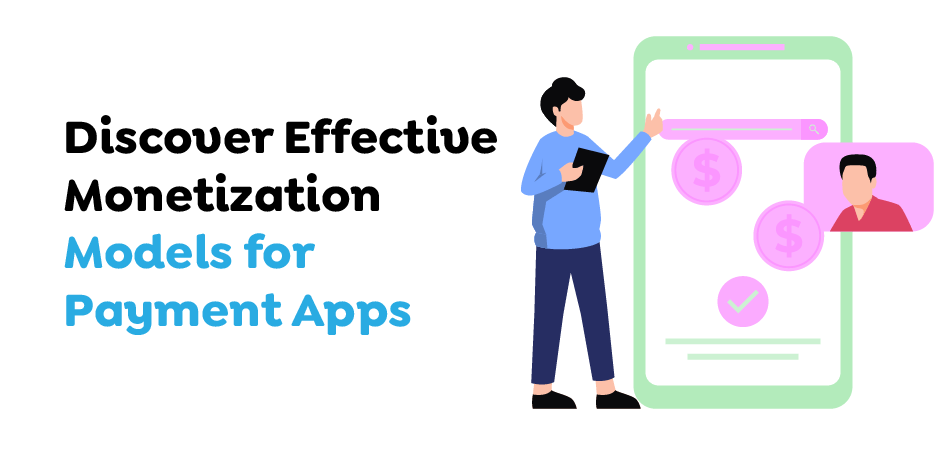
At one time, transferring and receiving money from overseas was extremely difficult. In the end, PayPal was successful in solving this long-standing issue. It made it possible for individuals to make transactions abroad without hassle. In addition, it was cheaper and more efficient than most banks and other financial establishments at the time.
This was a major factor in its rising popularity. So, its revenues and net worth grew significantly throughout the years. But there isn’t one way that PayPal earns money.
PayPal earns money in many ways. Let’s examine a few of them.
International Payments
When a person receives payments from multiple locations, PayPal charges them a fee, including currency conversion charges. Additionally, the fee for international payments differs based on the currency.
Withdrawal Fees
It’s extremely simple to transfer money using a customized link from PayPal. If you decide to withdraw the cash, PayPal will charge you the withdrawal fee. It is 2.9% of the total amount paid in the USA plus a base price of $0.30.
Payflow
Merchant accounts can integrate the Payflow gateway with their website for selling. In addition, with a no-cost plan, customers can enter their payment details on a PayPal page.
Additionally, there is a premium option. The premium option is priced at $25 USD per month. By choosing this plan, users can create their checkout page to suit the requirements of their business.
Additionally, PayPal charges $0.10 for any payments made using credit cards. Additionally, it offers a range of options like advanced fraud protection and buyer authentication, as well as screening, etc.
Business in a Box
PayPal offers some solutions through a close partnership with Xero, Xero, and WooCommerce. In return, the company receives a significant affiliate commission.
Transaction Fees
The transaction fee is the primary and fundamental method by which PayPal earns its money. Therefore, every time a customer makes or receives money, PayPal charges them a cost based on the country of origin.
Therefore, the cost of transactions differs from country to country. In addition, the fee is calculated based on the amount of money you transferred using your debit or credit card or PayPal credit.
The transaction fee is different for businesses and merchants. Vendors who use business accounts to accept payments from their customers must pay 2.9% of their earnings.
In addition, they must pay 0.30 USD for each transaction.
Business Accounts
PayPal provides Pro-Business accounts with additional features and certain resources specifically designed for customers. However, PayPal charges its clients the equivalent of $30 USD per month to use this extra feature.
Interests
The money stored in PayPal is put into liquid investments, which generate interest, which the business uses as revenue.
Working Capital
The borrower can get as much as 15% from the previous twelve months ‘ worth of transactions (up to $85,000). Additionally, there are no fees or interest. The rate is fixed. The payment is made proportional to PayPal sales. The greater the percentage, the lower the cost.
Credit Interest
If you use a credit amount of $99 or more that is fully paid within 6 months, then you don’t have to make a payment for it. For all other circumstances, this percentage will be 19.99%. The per cent rate will be calculated based on the posting date.
These are the methods by which PayPal makes money. It is important to understand that all successful businesses, regardless of their field of expertise, have multiple sources of income.
Cost of Developing an App Like PayPal
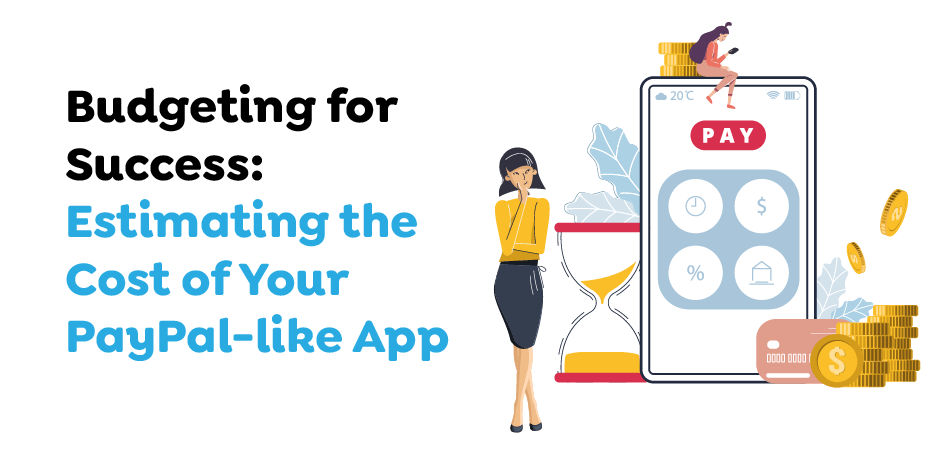
When discussing mobile payment app development costs, there are a variety of aspects to take into consideration, including the geographical area of the selected firm or development team, the number of basic and advanced features, app complexity, the cost charged by the chosen developer of the app, current market trends, the time required in the development process, and much more.
Development Team
The development of apps like PayPal requires a group of experienced professionals, such as project managers, developers, designers, and QA testers. Pay rates can vary depending on the area of work and experience. Hiring a mobile app development company in Canada will cost you less as compared to other countries. However, on average, the cost of a development team could range between $50,000 and $200,000 annually.
Technology Stack
The stack selection, which includes frameworks, programming languages, and tools, could affect the price. The technology stack could be priced between $10,000 and $50,000 for a premium payment app.
Security Measures
Due to the delicate nature of financial transactions, implementing the most advanced security measures is crucial. These could include encryption and secure APIs, fraud detection systems, and many more. All of these could add anywhere from $20,000 to $100,000 to the budget.
Licensing and Compliance
Payment apps must comply with legal requirements and acquire necessary licenses. The cost of compliance varies depending on the location where they operate; however, it is expected to be between $30,000 and $150,000.
Server and Infrastructure
To ensure reliable and smooth service, a significant investment in hosting servers, servers, and cloud infrastructure is needed. This could range from $20,000 to $80,000 per year.
Maintenance and Updates
Maintenance and update routines are essential to ensure the app is functional and safe, with annual maintenance fees ranging from approximately $10,000 to $50,000.
Marketing and Customer Support
Marketing and offering strong customer support are crucial to attracting and keeping customers. They can add $30k to $100k to the total project costs.
In addition to these, there are various other elements to consider. When weighing all of these aspects, the total development cost for apps like PayPal is estimated to be between $25,000 and $50,000. If you integrate advanced features and capabilities, the estimated cost could rise even more.
Why Choose Techugo for Developing Apps like PayPal?
Choosing Techugo for creating apps like PayPal offers a strategic edge rooted in their expertise and commitment to cutting-edge technology solutions. Techugo, an app development company excels in supplying robust payment platforms tailored to specific enterprise needs, guaranteeing scalability and security from inception to deployment. Their deep knowledge of fintech trends and compliance needs promises a reliable partnership for navigating the complexities of digital payments. With Techugo, businesses gain access to a proven track record of thriving app development, comprehensive support services, and a forward-thinking approach that aligns seamlessly with the evolving demands of the market.
The Key Takeaway
To sum up, creating an online payment application such as PayPal is a difficult task that requires extensive knowledge. But with technological advances, it’s growing to be one of the top niches for app development.
Making the investment to build a payment app is extremely profitable if you consider the massive demand for digital payment solutions.
However, brand-new online payment services are introduced daily. You must be attentive to market trends to understand the latest developments. It is vital to keep an eye on the competition in order to develop a profitable payment app.
Get in touch with us to develop payment apps like PayPal.
Get In touch
We are excited to here from you and let’s start something special Together. Call Us for any inquiry.
Write us
sales@techugo.caJust a call away
About you




